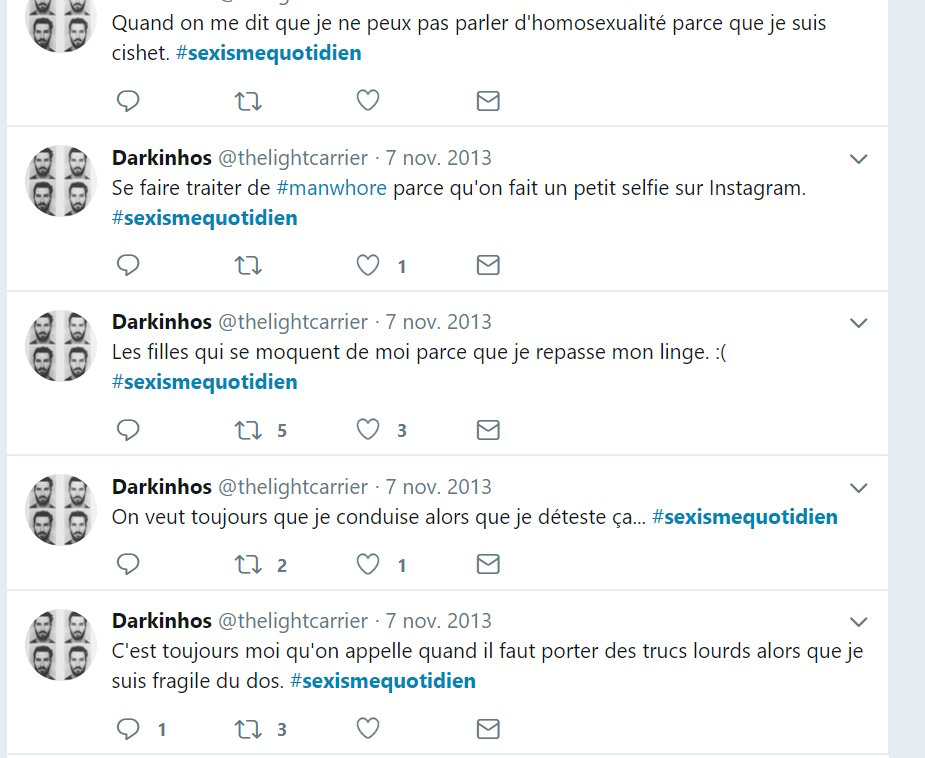Sommaire
From a tweet exchange to political reactions: How the league of LOL became a national issue
The League of LOL and its past harassment have dominated discussions this weekend, even surpassing commentary on the Gilets Jaunes protests in the trending topics. But how did this "cold case" suddenly resurface?

The story
It all started almost a week ago when Thomas Messias from Slate posted a tweet criticizing a journalist's (Alexandre Hervaud?) double standards.

Following this, Alexandre Hervaud complained about being subtweeted by Thomas Messias, starting a full thread.
IrisKV responded by directly attacking and exposing many of the posts.
This caught the attention of Lucile Bellan, who sought to defend Thomas Messias and informed journalists that she had files available for those interested in investigating.
It was also reported by Starsky that a journalist was indeed looking to write an article on the subject.
https://twitter.com/starsk_y/status/1093263423004180487
Another post explained the situation to people unfamiliar with the League of LOL.
Checknews then released an article recounting the League of LOL.
Witnesses stated that the League was getting off easy, and the article was too favorable to them, giving them too much attention.
https://twitter.com/DivideMeByZero/status/1093909554906181632
This article opened the floodgates. Daria Marx posted a thread condemning the issue, while Nadia Daam, who had left Twitter due to harassment from the jeuxvideo.com forum, returned to make a statement on the League of LOL.
https://twitter.com/DaamNadia/status/1093938966288584706
Mélanie Wanga also returned to share her testimony.
https://twitter.com/babymelaw/status/1093956135957221376
The topic then began trending on Twitter, even surpassing the Gilets Jaunes hashtag for the weekend. This raised questions among users of the platform.

At this point, many were wondering who was part of the infamous League of LOL, and a pastebincircule file circulated, revealing the names of journalists, PR professionals, and others. Stephen des Aulnois tried to apologize on Twitter, but his apology was quickly dismissed, leading him to delete his apology, and eventually, his Twitter account.
The reaction snowballed, with articles emerging from Le Monde, France Inter, l'Obs. Members of the League of LOL apologized collectively in a shared Word document, except for one person who did so on LinkedIn.
Other testimonies followed, including those of LeReilly, Kriisiis, Laura Manach, and Nicolas Catard.
The political class also reacted, and the issue became a national affair.


The spread of the league of LOL

The analysis
The article as a catalyst, the testimonies as the narrative
The sequence of events was as follows:
- Exchanges between Alexandre Hervaud and two others, which did not initially mean much to observers.
- A Checknews article recounting the League of LOL, presenting both sides.
- Following this article, various victims came forward to reveal the truth of what happened.
- This brought the topic into Twitter's trending discussions, reaching people outside of the usual circles.
- Subsequently, other articles on the matter emerged (GlamourParis / Le Monde).
- Political reactions followed.
- This generated a large number of comments, and with Monday approaching, more articles were likely to be written.
From a Tweet Exchange to Political Reactions: How the League of LOL Became a National Issue
The League of LOL and its past harassment have dominated discussions this weekend, even surpassing commentary on the Gilets Jaunes protests in the trending topics. But how did this "cold case" suddenly resurface?
The Story
It all started almost a week ago when Thomas Messias from Slate posted a tweet criticizing a journalist's (Alexandre Hervaud?) double standards.
Following this, Alexandre Hervaud complained about being subtweeted by Thomas Messias, starting a full thread.
IrisKV responded by directly attacking and exposing many of the posts.
This caught the attention of Lucile Bellan, who sought to defend Thomas Messias and informed journalists that she had files available for those interested in investigating.
It was also reported by Starsky that a journalist was indeed looking to write an article on the subject.
Another post explained the situation to people unfamiliar with the League of LOL.
Checknews then released an article recounting the League of LOL.
Witnesses stated that the League was getting off easy, and the article was too favorable to them, giving them too much attention.
This article opened the floodgates. Daria Marx posted a thread condemning the issue, while Nadia Daam, who had left Twitter due to harassment from the jeuxvideo.com forum, returned to make a statement on the League of LOL.
Mélanie Wanga also returned to share her testimony.
The topic then began trending on Twitter, even surpassing the Gilets Jaunes hashtag for the weekend. This raised questions among users of the platform.
At this point, many were wondering who was part of the infamous League of LOL, and a Pastebin file circulated, revealing the names of journalists, PR professionals, and others. Stephen des Aulnois tried to apologize on Twitter, but his apology was quickly dismissed, leading him to delete his apology, and eventually, his Twitter account.
The reaction snowballed, with articles emerging from Le Monde, France Inter, and l'Obs. Members of the League of LOL apologized collectively in a shared Word document, except for one person who did so on LinkedIn.
Other testimonies followed, including those of LeReilly, Kriisiis, Laura Manach, and Nicolas Catard.
The political class also reacted, and the issue became a national affair.
The Spread of the League of LOL
The Analysis
The Article as a Catalyst, the Testimonies as the Narrative
The sequence of events was as follows:
- Exchanges between Alexandre Hervaud and two others, which did not initially mean much to observers.
- A Checknews article recounting the League of LOL, presenting both sides.
- Following this article, various victims came forward to reveal the truth of what happened.
- This brought the topic into Twitter's trending discussions, reaching people outside of the usual circles.
- Subsequently, other articles on the matter emerged (GlamourParis / Le Monde).
- Political reactions followed.
This generated a large number of comments, and with Monday approaching, more articles were likely to be written.
Two key elements stand out in this propagation:
1. The Checknews article was criticized for the emphasis it gave to the protagonists' apologies. Without this article, however, it is likely that none of this would have come to light. The article served as a catalyst, providing everyone with an initial key to understanding the events.
2. The layering of various testimonies gave a narrative to the situation, constantly adding new developments to the controversy, introducing more people (victims or perpetrators), or new aspects of the story.
We must also note the role of Vincent Glad at the start, who was particularly targeted because he was being portrayed as an example in the coverage of the Gilets Jaunes. There was an element of opportunism and a political undertone to some of the attacks.
However, across all publications on the League of LOL, these vendettas were more of a minority.
Produced and contextualized traces
I previously highlighted what I call the "temporal marker" in crisis analysis: every day, individuals and organizations leave traces across digital spaces.
These traces are produced in a very specific context, but contexts can change, and these traces can be "unearthed" by recipients and read differently. This is exactly what happened here.
These traces were created within a space with its own rules, environment, and microcosm, which no longer apply, allowing a collective liberation of speech. Many were surprised once they spoke out to find that there were no longer the negative reactions of the past.
Some have even engaged in "tweet archaeology" to find traces that bear witness to that time.


From individuality to collectivity
Most of the protagonists' defenses were rooted in individuality, but in a neutral sense, that individuality became collectivized as all actions were grouped under "The League of LOL," including those beyond the group's scope.
In this context, passive individuals bear some guilt. There is a certain irony in the fact that the collective allowed impunity, and now that same collective has turned against the individuals.
Narrow crowd spread
The spread, however, remained mostly confined to a group of people who all had connections to each other, as the entirety of the conversations was very homogenous.
Conclusion
This case is interesting from a social media observer's perspective because it touches on societal issues, harassment in the broad sense, and the resurgence of past traces into the present.
In a world where crises used to stem from new events that pushed an individual or organization into a crisis, the idea that past actions can resurface in such a torrent is striking.
The third part of the story could potentially shift the crisis towards other actors, like the ESJ (School of Journalism), concerned media outlets, or others, as victims not only want apologies but also strong actions, such as resignations.
Photo credit: Shutterstock



